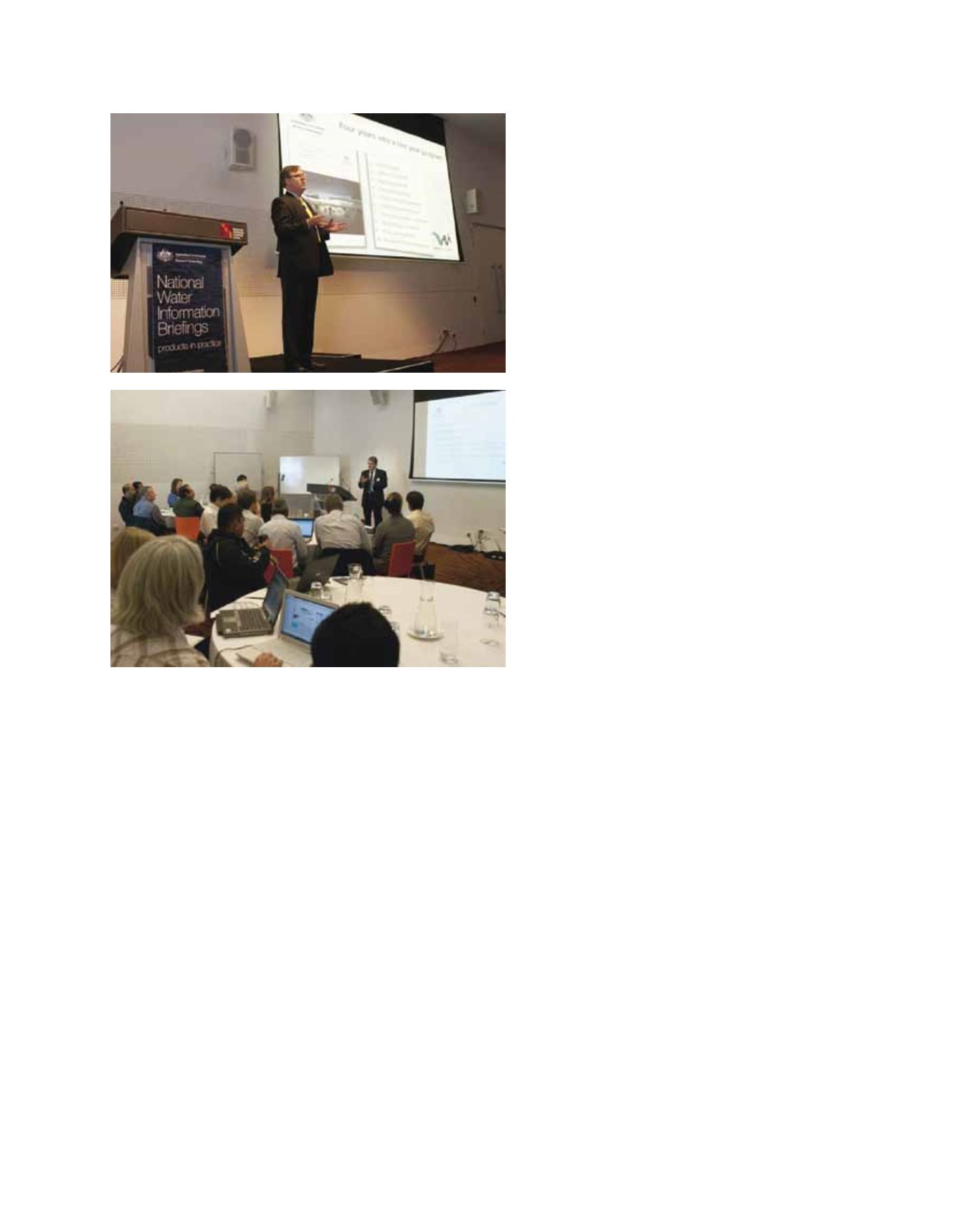

[
] 82
W
ater
is sent to approximately 700 interested stakeholders, notifying them of
the update and providing them with highlights and a summary. These
700 stakeholders, primarily from the water industry, expressed their
interest in receiving these emails by subscribing through BoM’s website
and when attending workshops. Each month, senior staff members
from BoM present the National Climate and Water Briefing in the
nation’s capital, Canberra. This briefing, to senior policy and planning
managers from government agencies and other organizations, details
the latest climate and water conditions in Australia.
Users of the seasonal streamflow forecasts have a range of climate
expertise. To improve stakeholder understanding of progress
in water information and the value it brings, in November and
December 2011 Climate and Water Division staff delivered a series
of eight National Water Information (NWI) Briefings, one in each
capital city in Australia. Overall there were 1005 participants,
comprising 831 external participants and 174 BoM staff. Similar
briefings had been previously undertaken during 2007–8 and 2009.
The briefings were a mixture of plenary sessions and technical
and interactive workshops. There were three seasonal streamflow
forecasting workshops, held in Melbourne, Sydney and Canberra.
These workshops were designed primarily to educate participants
about the seasonal streamflow forecasts and to build relationships
with more stakeholders. One of the outcomes of the
briefings was a noticeable increase in access of BoM’s
water information products.
During the NWI workshops, a number of external
stakeholders expressed their interest in being involved
in case studies, which will be conducted in 2012 and
published on BoM’s website. The aim of these case
studies will be to show how key stakeholders have
achieved a good outcome by using seasonal streamflow
forecasts to inform their decision-making processes.
Although there is a feedback form on the seasonal
streamflow forecast website, BoM has received little
direct feedback from users about the service. To help
address this, the EHP team conducted a user survey
during the first half of 2012. The objectives of this
survey include:
• Determining who is using the products, how
they are being used and how often
• Finding out whether users are satisfied with
service delivery
• Learning how users feel the current service could
be improved.
What next?
The Seasonal Streamflow Forecasting Service will be
extended to include 70 sites by December 2012, with
investigations of possible new sites currently underway.
The service could be further expanded in the future,
subject to availability of resources and suitable forecasting
sites. Some of the main challenges moving forward are:
• Finding such suitable forecasting sites in as many
different hydroclimatic regions as possible
• Trying to satisfy user needs within the constraints of
available resources.
As well as user need, in order to be considered for
inclusion in the service, forecast locations must
satisfy criteria of data availability and forecast
skill and accuracy. Progress will be reported in the
WIRADA annual report.
6
Principles of the Global Framework
This case study most obviously relates to the Global
Framework for Climate Services Principle 8, which
emphasizes the importance of user-provider partner-
ships. Understanding and responding to user needs
has been an essential part of the development of the
Seasonal Streamflow Forecasting Service from the very
beginning, and has continued throughout the transition
to and maintenance of an operational service. Forecasts
must ultimately lead to changes in decisions that result
in improved outcomes in water resource management
– producing skilful predictions is a necessary but insuf-
ficient requirement to satisfy customers. One aim of
stakeholder engagement is to create ownership of the
products and services within potential user segments,
but the main advantage of early user involvement is the
development of a fundamentally better service satisfy-
ing the real needs of users.
The Bureau’s Acting Director Dr Rob Vertessy presenting at the NWI Briefings (top);
and the Acting Manager of the Flood Forecasting and Warning Section Jeff Perkins,
presenting at an NWI workshop (above)
Image: BoM
















